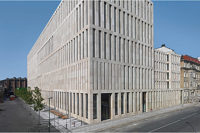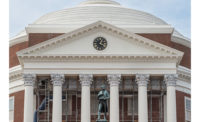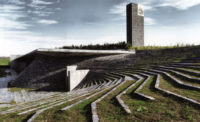
The winning projects of the 25th Marble Architectural
Awards were on display at the CarraraMarmotec trade fair in Italy this past
May, and the architects were on hand to discuss their stone selection
process.
For the jury of the Marble Architectural Awards, which were presented at the latest edition of CarraraMarmotec in Carrara, Italy, the criteria is straightforward: Natural stone needs to be an “essential” element of the project that is much more than a decorative material. It needs to offer solutions for anyone interested in spaces and material.
Organized by the Internazionale Marmi e Macchine (IMM) Carrara to promote the knowledge of marble and all natural stones, the MAA program has served to acknowledge trends in contemporary architecture and the approach to the use of natural stone throughout the world. Now in its 25th year, the program bestowed awards to architects and designers who have skillfully used natural stone in contemporary architecture.
“For the Silver Edition, we extended participation to all projects completed in the last 10 years in all countries of the world,” said Giorgio Bianchini, IMM Chairman. “The quality and number of the participants has enabled us to see the vitality and excellence of the results of a universe of architects and designers who have shown particular skill in the use of natural stone. Thanks to new technology, we are seeing a rediscovery of natural stone with new uses. Designers are showing their skills in using ancient materials like marble in a modern way. Faced with a ‘top-end’ demand seeking quality, designers have come up with projects that show great design skills and a high level of knowledge of natural stone in all areas of the world.”
Consistent with past tradition, a panel of experts was composed of leading authorities from various areas of design and academia, chaired by Bianchini. This year’s panel included Fulvio Irace, Lecturer at Milan Polytechnic and Architecture Critic; Flaviano Maria Lorusso, Lecturer at the architecture faculty in Florence; and Andreina Guerrieri, Director of the Italian Institute for Foreign Trade, who runs the Florence office.
The 25th year of the awards was open to projects completed anywhere in the world with any marble, granite, travertine or other natural stone material from anywhere and processed anywhere in the world.
At the end of the judging, the panel emphasized that the projects demonstrated how natural stone gives “substance” to the architecture, rather than being just a decorative product. Moreover, they stated that it is becoming more and more evident that stone is being utilized as “urban art,” particularly in public spaces. They also pointed to the enduring popularity of white marble.
In addition to being organized by IMM, the MAA program was patronized by the Italian Institute for Foreign Trade and was sponsored by Carrara Savings Bank and the stone supplier, Savema.A look at some of this year’s MAA Winners follows.

Oslo Opera House
First Prize, Architecture - Oslo Opera House, Oslo, NorwayArchitect: Snøhetta | Stone Supplier: Campolonghi Group, Massa, Italy
First Prize went to the Oslo Opera House, designed by the Snøhetta of Oslo, Norway. The jury remarked how the building “harmonizes” the exterior and interior public spaces - as well as the performance space - with the use of white marble. It also commented on how the facility was “perfectly set into the urban environment.” Completed in 2008, the project employs White Carrara marble from Campolonghi Group. When receiving the award, Tarald Lundevall of Snøhetta retraced the stages that led to the choice of white marble after a series of assessments that took the design group all over the world. “Only white marble - with its history and characteristics - could enable us to make a building that has become a real urban monument,” he said. “This result was achieved thanks to the white marble, but also thanks to Carrara, where there is the manual, technical and managerial expertise to make such a unique work in terms of size and symbolic value.”

Ara Pacis Museum
Special Mention, Architecture - Ara Pacis Museum, Rome, ItalyArchitect: Richard Meier | Stone Supplier: Mariotti Carlo & Figli, Tivoli, Italy
A special mention was made for Richard Meier’s design of the Ara Pacis Museum in Rome, as the jury could not overlook the project’s various uses of Roman travertine, which make it “akin” to Meier’s design for the J. Paul Getty Center in Los Angeles.

Piazza di Santa Maria Novella
First Prize, Public Areas - Piazza di Santa Maria Novella, Florence, ItalyArchitect: Maurizio Barabesi | Stone Supplier: Fratelli Bianchi snc, Forlí Cesena, Italy
The renovation of Piazza di Santa Maria Novella in Florence was cited for its minimalist architecture, as well as the elegant design on the stone that covers the square. “The project is a joint effort by the entire technical office at Florence council that made an important contribution to the job,” Barabesi explained during the awards ceremony. “It was a very challenging job, having to bear in mind the incredible history and symbolic nature of the 14th century square with its historical cathedral. We returned to the original design of the square that had been lost over time, enriching it with a score on the stone that covers the square.”

Piazza Bad Kissingen
Special Mention, Public AreasArchitecture - Piazza Bad Kissingen, Marina di Massa, ItalyArchitect: Massimo Sergio Rossi | Sculptor: Pino Castagna
Another special mention was made for Piazza Bad Kissingen in Marina di Massa, in particular for a sculpture - created by Pino Castagna in White Carrara marble - that symbolizes the relationship between the Apuan Alps and the sea. The panel also stated that the surrounding Pietra di Trani stone paving was an effective “backdrop” for the sculpture.

Exedra Hotel
First Prize, Interiors - Exedra Hotel, Milan, ItalyArchitect: Italo Rota
In the interiors category, First Prize went to the Exedra Hotel in Milan, which is part of the Boscolo chain and was designed by Italo Rota. The jury noted the “elegant and refined” use of Apuan marble -- specifically Venato White Carrara -- to embellish the communal spaces of the hotel. “Today, we have to endeavour to [consider] the real technology that pushes us to [work] raw materials, especially those of the past that must be understood and enhanced,” Rota said at the awards ceremony.

225 Franklin Street
Special Mention, Interiors - 225 Franklin Street, Boston, MAArchitect: CBT Architects | Stone Supplier: Euromarble, Carrara
The jury gave a special mention to “225 Franklin Street” in Boston, designed by architect Robert Brawn from CBT Architects, also of Boston. “The very careful study of the vein pattern and the colors create a particularly striking hall in the building, and it highlights the attention that Euromarble gave to assisting the designers in the selection, processing and installation of the products,” stated the panel.
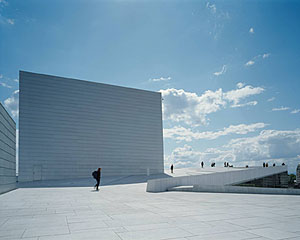
Oslo Opera House

Oslo Opera House
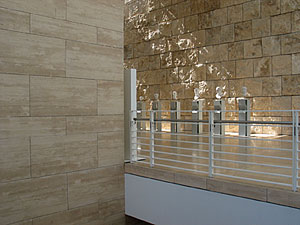
Ara Pacis Museum

Ara Pacis Museum
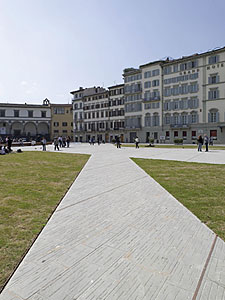
Piazza di Santa Maria Novella
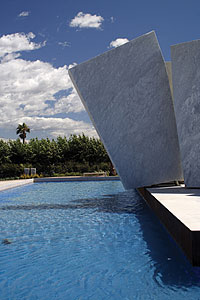
Piazza Bad Kissingen

225 Franklin Street
